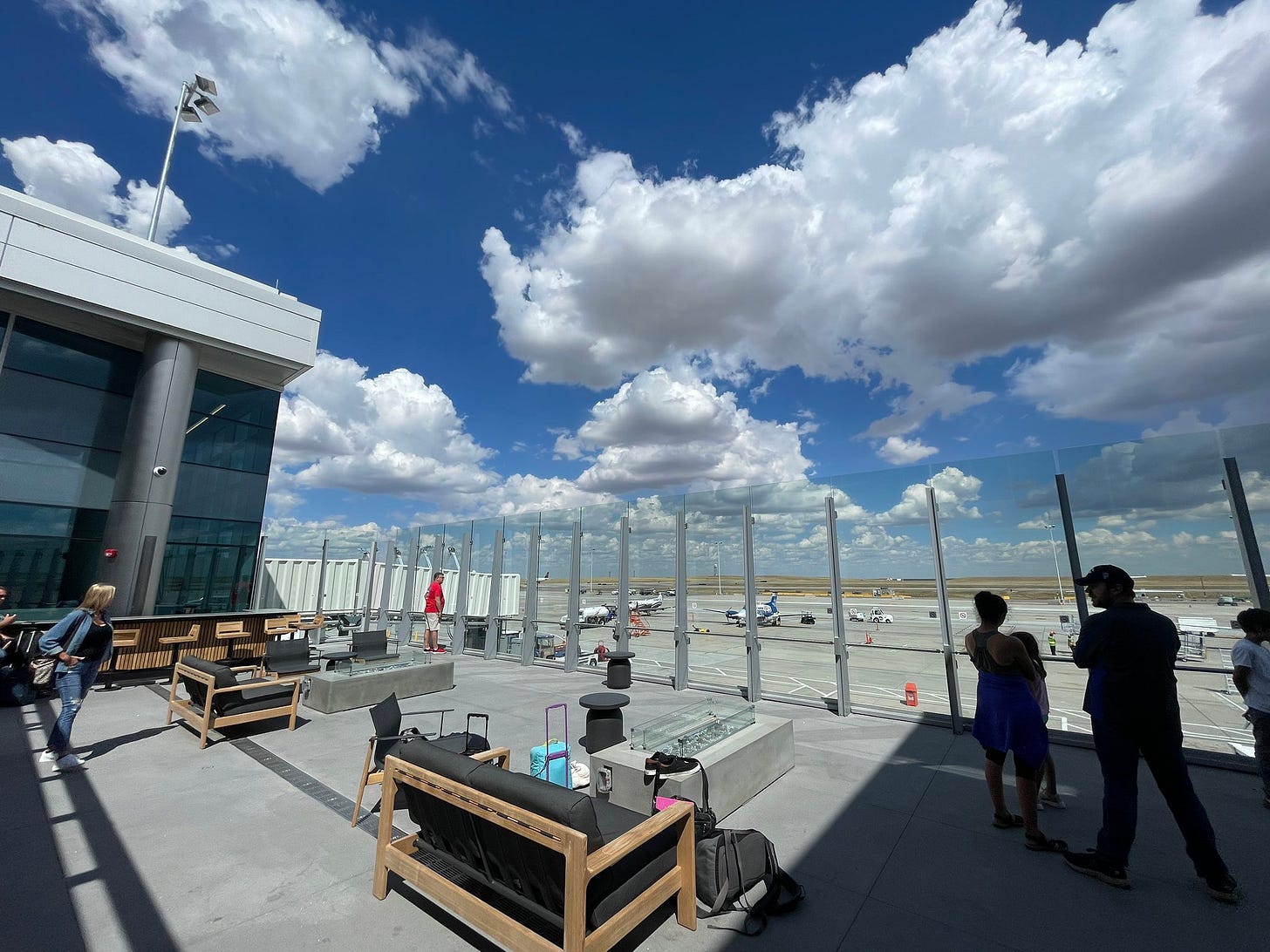About five hours into what would be a 15-hour delay at Washington’s Dulles International Airport recently, I commented to my husband how great it would be if we could just step outside and get a breath of fresh air. I was even considering dragging two young children, bags and all, back through security just to do so.
I did not step outside that day — instead we enjoyed several of the airport’s many lounges and rode the Aero Train countless times — but I did wonder why Dulles, the international gateway to the nation’s capital does not have an outdoor terrace after security (or, airside) for travelers to use. Not one of the many existing airline lounges, or even the design for the under-construction Concourse E, includes a patio.
Fifteen years ago, the fact that Dulles does not have an outdoor space airside would not have bothered me. Few major American airports did. Patios, terraces, or observation decks were the domain of small regional airports or select airports in climate-friendly locales — like Long Beach and Palm Springs in California — where outdoor concourses make sense.
Then, Delta Air Lines opened a Sky Deck in Terminal 4 at New York’s JFK International Airport in 2013 and everything changed.
Airports across the country have begun, if not clamoring for, actively including consideration of outdoor airside spaces in expansion projects. Patios, both ones open to the public and exclusive to airline lounge patrons, have opened in Atlanta, Austin, Baltimore1, Denver, Kahului, Los Angeles, New York, Salt Lake City, and San Francisco to name a few.
And more are in the works, including in New York, Pittsburgh, and San Diego,
“I would love to declare it a trend,” said Harriet Baskas who writes the Stuck at the Airport blog. “I would love to encourage it as a trend because people love airports and are spending more time at airports. If they can get some fresh air and experience what’s happening at an airport, they’re going to be less stressed and love that airport more.”
The truth is that, while airports may want and travelers enjoy outdoor terraces, the spaces cost money to build and maintain, and can come at the expense of limited real estate2 that could go to other revenue-generating activities. These factors present are very real challenges to the widespread adoption of patios at airports across the U.S.
And did I mention the weather?
“I love the idea of being able to go outside and be a part of what’s happening on the tarmac and see it from a different perspective,” Thom Filicia, the designer of Delta’s first two Sky Decks in Atlanta and New York, told Architectural Digest in 2013.
“You feel much more connected to the whole experience being able to look at it from both inside and outside, to hear the sounds and the wind. It’s pretty cool. It gives you a different relationship with travel. You really are right next to the planes,” he continued.
That idea of “connectedness” is a big part of contemporary airport design. The idea of locking travelers away in the self-contained bubble of the airport and plane with little sense of the world outside passed with the brutalist behemoths of the 1970s and 1980s. In the decades since, airport architecture has moved towards removing those view-obstructing walls towards largely glass-and-steel structures that, while still self-contained, give the traveler at least some feeling of connection to the world around them.
Think Norman Foster’s London Stansted terminal (opened 1991), Renzo Piano’s Osaka Kansai terminal (opened 1994), Ricardo Bofill’s Barcelona El Prat Terminal 1 (opened 2009), or more recently HOK’s New York LaGuardia Terminal B (opened 2018-2022).
Outdoor patios are, if you think about it, simply the next logical next step in this evolution. By removing that final barrier — a wall of glass in most cases — between the traveler and the world outside they can, at least try, to become fully connected to a place.
How airports and their architects do just that — take down that final wall — is the question.
Keep reading with a 7-day free trial
Subscribe to Airport Architecture to keep reading this post and get 7 days of free access to the full post archives.






